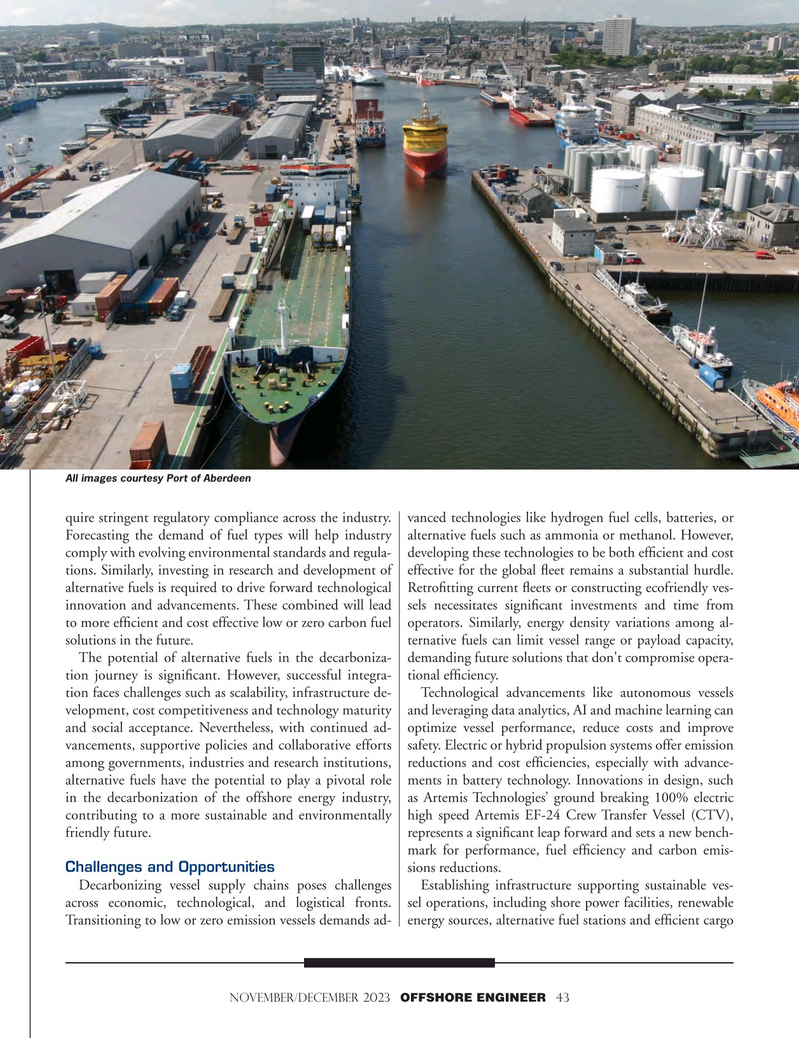
Page 43: of Offshore Engineer Magazine (Nov/Dec 2023)
Read this page in Pdf, Flash or Html5 edition of Nov/Dec 2023 Offshore Engineer Magazine
All images courtesy Port of Aberdeen quire stringent regulatory compliance across the industry. vanced technologies like hydrogen fuel cells, batteries, or
Forecasting the demand of fuel types will help industry alternative fuels such as ammonia or methanol. However, comply with evolving environmental standards and regula- developing these technologies to be both effcient and cost tions. Similarly, investing in research and development of effective for the global feet remains a substantial hurdle. alternative fuels is required to drive forward technological Retroftting current feets or constructing ecofriendly ves- innovation and advancements. These combined will lead sels necessitates signifcant investments and time from to more effcient and cost effective low or zero carbon fuel operators. Similarly, energy density variations among al- solutions in the future. ternative fuels can limit vessel range or payload capacity,
The potential of alternative fuels in the decarboniza- demanding future solutions that don't compromise opera- tion journey is signifcant. However, successful integra- tional effciency. tion faces challenges such as scalability, infrastructure de- Technological advancements like autonomous vessels velopment, cost competitiveness and technology maturity and leveraging data analytics, AI and machine learning can and social acceptance. Nevertheless, with continued ad- optimize vessel performance, reduce costs and improve vancements, supportive policies and collaborative efforts safety. Electric or hybrid propulsion systems offer emission among governments, industries and research institutions, reductions and cost effciencies, especially with advance- alternative fuels have the potential to play a pivotal role ments in battery technology. Innovations in design, such in the decarbonization of the offshore energy industry, as Artemis Technologies’ ground breaking 100% electric contributing to a more sustainable and environmentally high speed Artemis EF-24 Crew Transfer Vessel (CTV), friendly future. represents a signifcant leap forward and sets a new bench- mark for performance, fuel effciency and carbon emis-
Challenges and Opportunities sions reductions.
Decarbonizing vessel supply chains poses challenges Establishing infrastructure supporting sustainable ves- across economic, technological, and logistical fronts. sel operations, including shore power facilities, renewable
Transitioning to low or zero emission vessels demands ad- energy sources, alternative fuel stations and effcient cargo november/december 2023 OFFSHORE ENGINEER 43

 42
42

 44
44